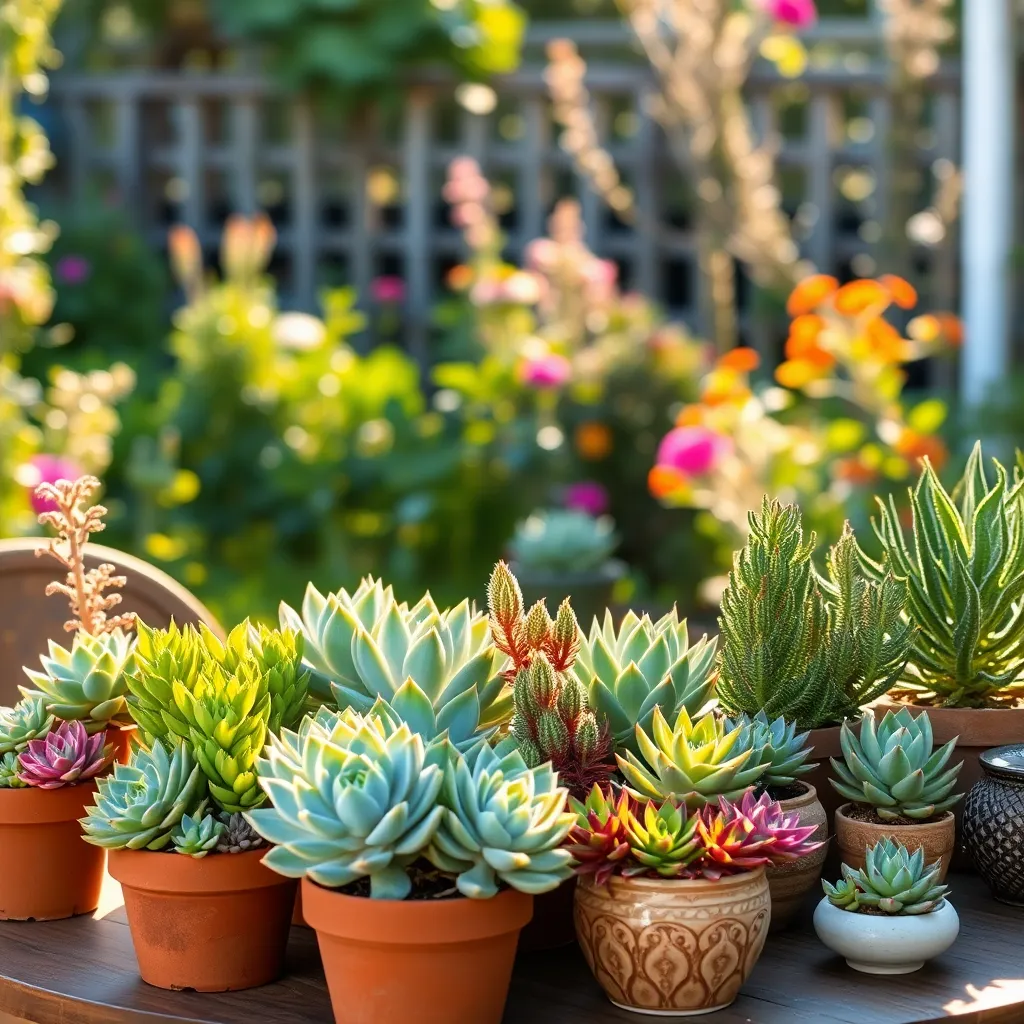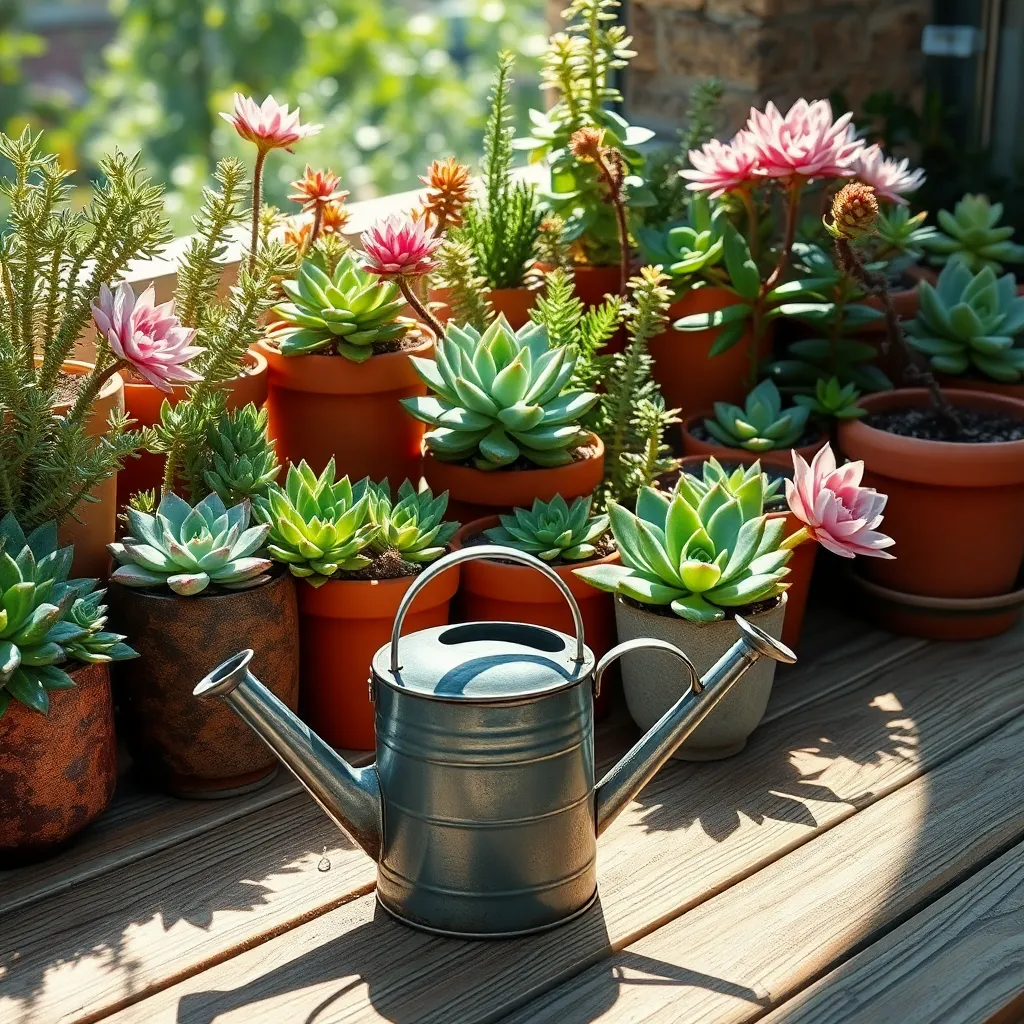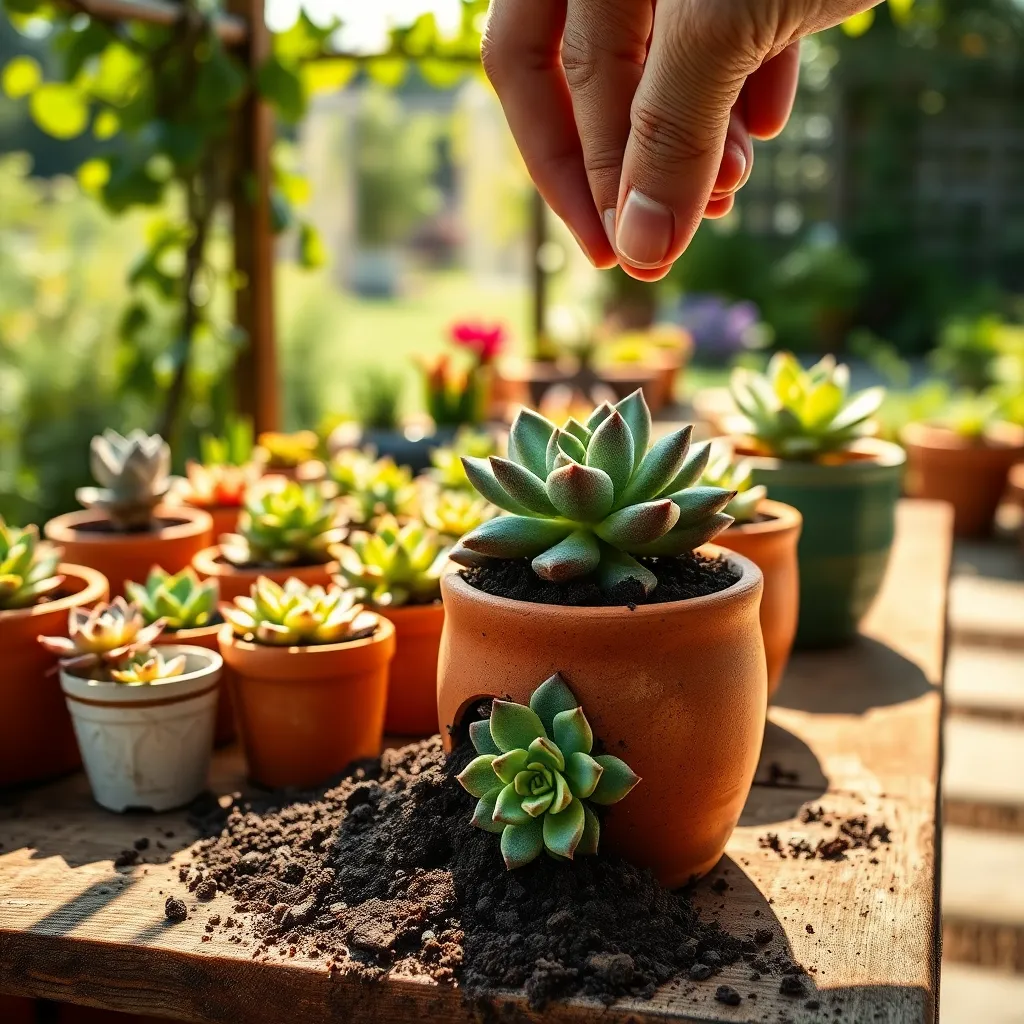Succulents, with their stunning array of shapes and colors, have captured the hearts of both novice gardeners and seasoned green thumbs alike. Their resilience and fascinating ability to thrive in diverse conditions make them an appealing choice for anyone looking to add a touch of nature to their home. Yet, just like any plant, succulents require specific care to truly flourish, whether they’re basking under the summer sun or nestled indoors during the winter months. Understanding these unique needs is key to ensuring your succulents remain vibrant and healthy all year long.
In this article, you’ll discover the secrets to keeping your succulents happy and thriving through every season. We’ll explore essential care tips, from mastering the art of watering to providing the perfect lighting and soil conditions. Whether you’re taking your first steps into succulent care or looking to refine your techniques, this guide offers something for everyone eager to nurture these delightful plants. By the end, you’ll be equipped with the practical knowledge and confidence to transform your space into a lush, succulent haven, no matter the time of year.
Select Optimal Succulent Varieties

Choosing the right succulent varieties is crucial for successful year-round care. Start by considering your local climate, as some succulents thrive better in specific conditions.
For beginners, Jade Plant (Crassula ovata) is an excellent choice due to its resilience and minimal care requirements. It thrives in well-draining soil like a cactus mix, and needs watering only when the soil is completely dry.
More experienced gardeners might enjoy experimenting with String of Pearls (Senecio rowleyanus), which requires bright, indirect light and careful watering to avoid rot. Ensure it’s planted in a pot with drainage holes to prevent water accumulation.
Varieties like Aloe Vera are not only easy to care for but also offer medicinal benefits, making them a dual-purpose plant. Place aloe in a sunny spot and water it deeply but infrequently, allowing the soil to dry out between waterings.
Provide Adequate Sunlight Exposure

Succulents are sun-loving plants that thrive best when given enough light, making sunlight exposure crucial for their health. Ideally, most succulents prefer about six hours of bright, indirect sunlight each day to maintain their vibrant colors and robust growth.
Position your succulents near a south or east-facing window to maximize light exposure, especially during the winter months when daylight is shorter. If natural light is limited, consider using grow lights to supplement and ensure your succulents receive the light they need.
Take care to gradually introduce your succulents to direct sunlight if they have been in a shaded environment, as sudden exposure can lead to sunburn on their leaves. A good practice is to start with morning sun for a few hours and slowly extend the duration over a week or two.
For those with outdoor succulents, ensure they are placed in a spot that receives morning sun but is sheltered from harsh afternoon rays. In hot climates, you might need to provide some form of shade to prevent leaf scorch, using shade cloth or placing them under taller plants for protection.
Water Sparingly and Consistently

Watering succulents might seem straightforward, but it’s crucial to understand their unique needs for success. These resilient plants thrive when watered sparingly and consistently, reflecting their native arid environments.
Instead of sticking to a rigid schedule, focus on the soil’s moisture level to guide your watering. Allow the top inch of soil to dry out completely before giving your succulents a thorough soak until water drains from the pot’s bottom.
Using a well-draining soil mix, such as one specifically formulated for cacti and succulents, is vital for preventing root rot. Incorporate materials like perlite or pumice into the soil to enhance drainage, which is essential for maintaining healthy roots.
For more advanced care, consider the climate and season when adjusting your watering frequency. During winter, when succulents enter a dormant phase, reduce watering to once every four to six weeks, ensuring you don’t overwater during their resting period.
Ensure Proper Drainage Setup

Proper drainage is essential for the health of your succulents, as these plants are highly susceptible to root rot when left in waterlogged soil. Choose a pot with at least one drainage hole to ensure excess water can escape, preventing water accumulation at the bottom.
To further enhance drainage, consider using a well-draining soil mix specifically designed for succulents and cacti. You can create your own mix by combining equal parts of potting soil, coarse sand, and perlite or pumice, which helps maintain the right balance of moisture and aeration.
When planting succulents outdoors, ensure your garden bed has excellent drainage by amending the soil with organic matter like compost. Additionally, consider raising the planting area or creating a slope to facilitate water runoff, especially in regions that receive heavy rainfall.
For those in wetter climates, adding a layer of gravel or small stones at the bottom of the pot can help improve drainage by allowing water to move more freely. However, remember that this should not be a substitute for using a pot with drainage holes, as proper drainage starts from the bottom and works its way up.
Adjust Care Seasonally

Succulents thrive when their care is adjusted to the changing seasons. In the spring and summer, when they are actively growing, you should increase watering frequency to every 1-2 weeks, ensuring the soil dries out between waterings.
During fall and winter, many succulents enter a dormant phase and require less moisture. Water them sparingly, about once a month, to prevent root rot, while ensuring they have ample indirect sunlight to sustain them.
In addition to adjusting watering, consider the temperature and light levels each season. Succulents prefer temperatures between 60-80°F (15-27°C), so move them indoors if outdoor temperatures drop below this range in the winter.
Light conditions also play a crucial role in succulent health throughout the year. While most succulents need about six hours of sunlight daily, you may need to supplement with a grow light during the shorter days of winter.
It’s important to monitor the soil condition seasonally as well. Use a well-draining cactus mix, and consider adding perlite or sand to enhance drainage, especially in humid climates or during wet seasons. Repotting every couple of years in spring ensures your succulents have fresh soil and room to grow.
Conclusion: Growing Success with These Plants
As we’ve explored, nurturing your relationship with your succulents involves understanding their unique needs: providing adequate sunlight, maintaining appropriate watering schedules, ensuring proper drainage, adjusting care seasonally, and being mindful of pests. These five key concepts are not only foundational for plant care but also serve as a metaphor for tending to all relationships in your life—requiring patience, attention, adaptability, and love.
To put this knowledge into practice, take a moment today to assess your succulents’ current environment. Are they receiving the right amount of light and water? Making a small adjustment now can have a significant impact on their health, much like a small gesture or conversation can strengthen your human relationships.
I encourage you to bookmark this article as a go-to guide for your succulent journey. By having it at your fingertips, you’ll be prepared to nurture your plants through every season.
As you continue to care for your succulents, remember that the same principles of empathy and attention can foster thriving relationships both in your garden and in your life. Here’s to cultivating connections that grow stronger over time!

